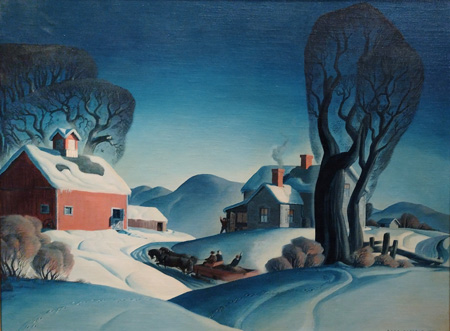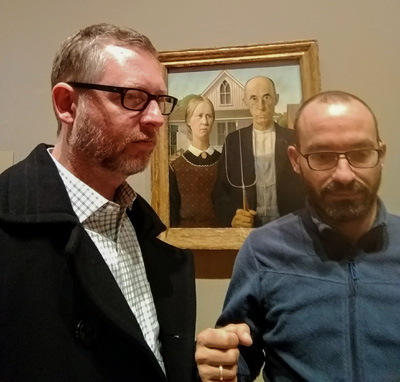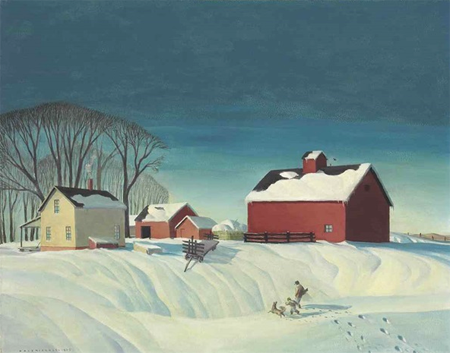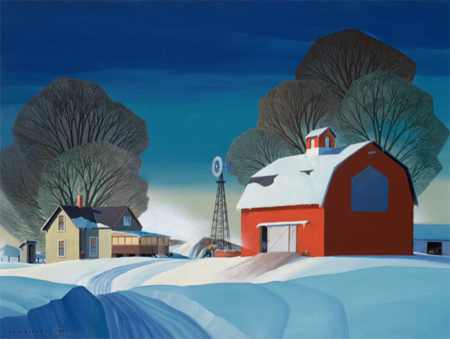
During our recent trip to the US, I spent an amazing morning at the Peabody Essex Museum in Salem. What a collection! One of the first pieces to catch my eye was a painting that reminded me of works I’d seen in Missouri by Thomas Hart Benton: richly-colored, soft & pillowy scenes depicting the American Midwest. I’d probably seen paintings by Dale Nichols before, but the above landscape from 1942 (Sunday Dinner in Franconia) made me want to learn more.

In the wake of the Great Depression, a group of American artists turned to images from their childhood for inspiration. Rejecting European abstract art, farmland scenes from the Midwest depicted the people & places key to American agriculture… an unapologetically local subject. Grant Wood’s American Gothic (1930) is perhaps the most well-known example of American Regionalism:

Born in David City, Nebraska in 1904, Nichols studied art in Chicago where he worked as both an advertising artist & a professional painter in the 1930s. His landscapes became increasingly sought after, & Nichols eventually became a professor at the University of Illinois. In 1939, he had the honor of showing his work to the world at the New York World’s Fair. Shortly after, the Met bought The End of the Hunt (1934) & displayed the painting next to a Picasso as an exercise of contemporary contrast.

Nichols took over from Grant Wood as art editor of the Encyclopaedia Britannica in 1942, something akin to being a head art guru on Wikipedia today. But by the end of World War II, abstract art had won. Nichols continued to paint in what many considered an anachronistic style that belonged in the past as he moved to Arizona & later to Guatemala. Although largely forgotten compared to Benton or Wood, Nichols had a huge influence on the American ethos of the 20th century.

Perhaps Nichols appeals to me because I have strong connections to the US Midwest myself & can identify with so many of his landscapes. Or maybe because I fell in love with different forms of Regionalism in Spain, from the Basque Country to Andalucía. Whatever the reason, I can’t wait to go to Nebraska with Rafa & see the collection at the Bone Creek Museum of Agrarian Art in Nichols’ home town!